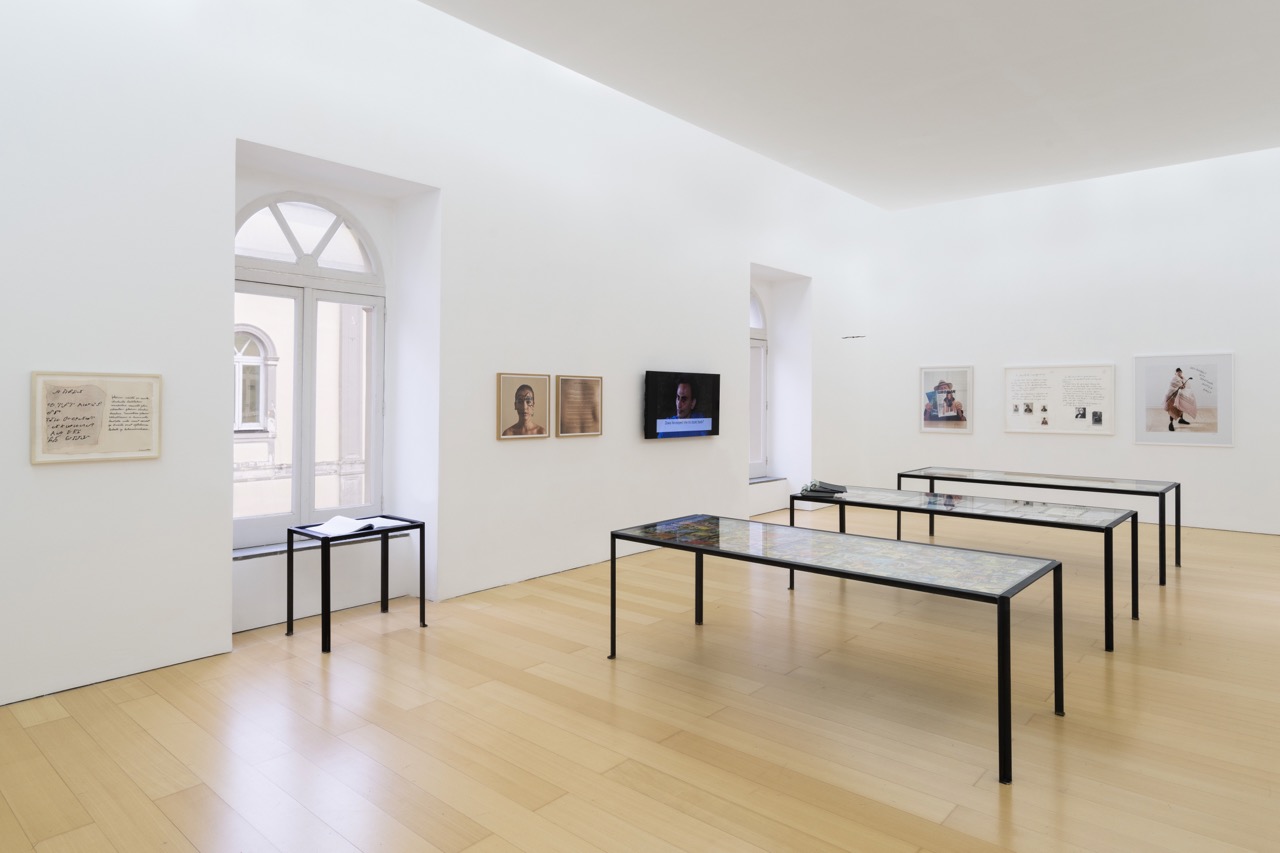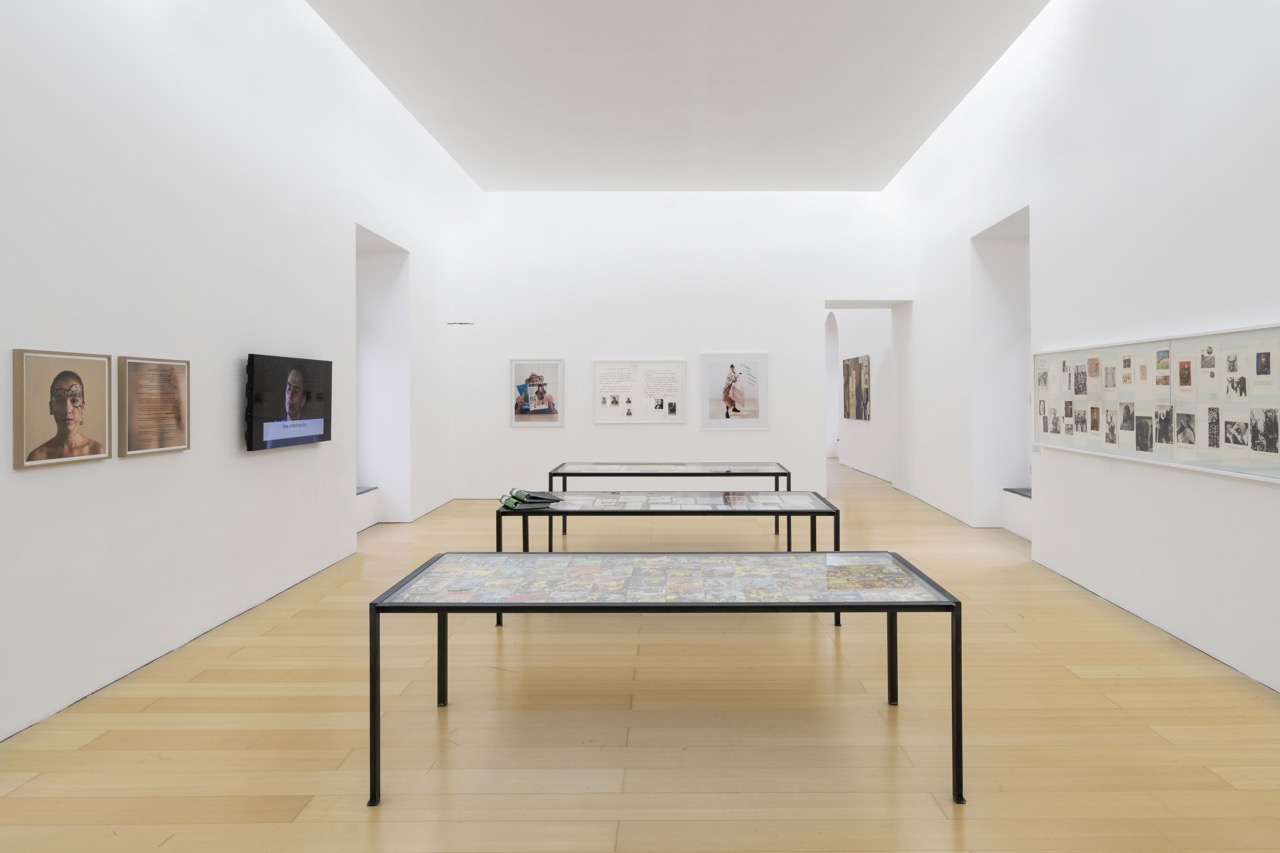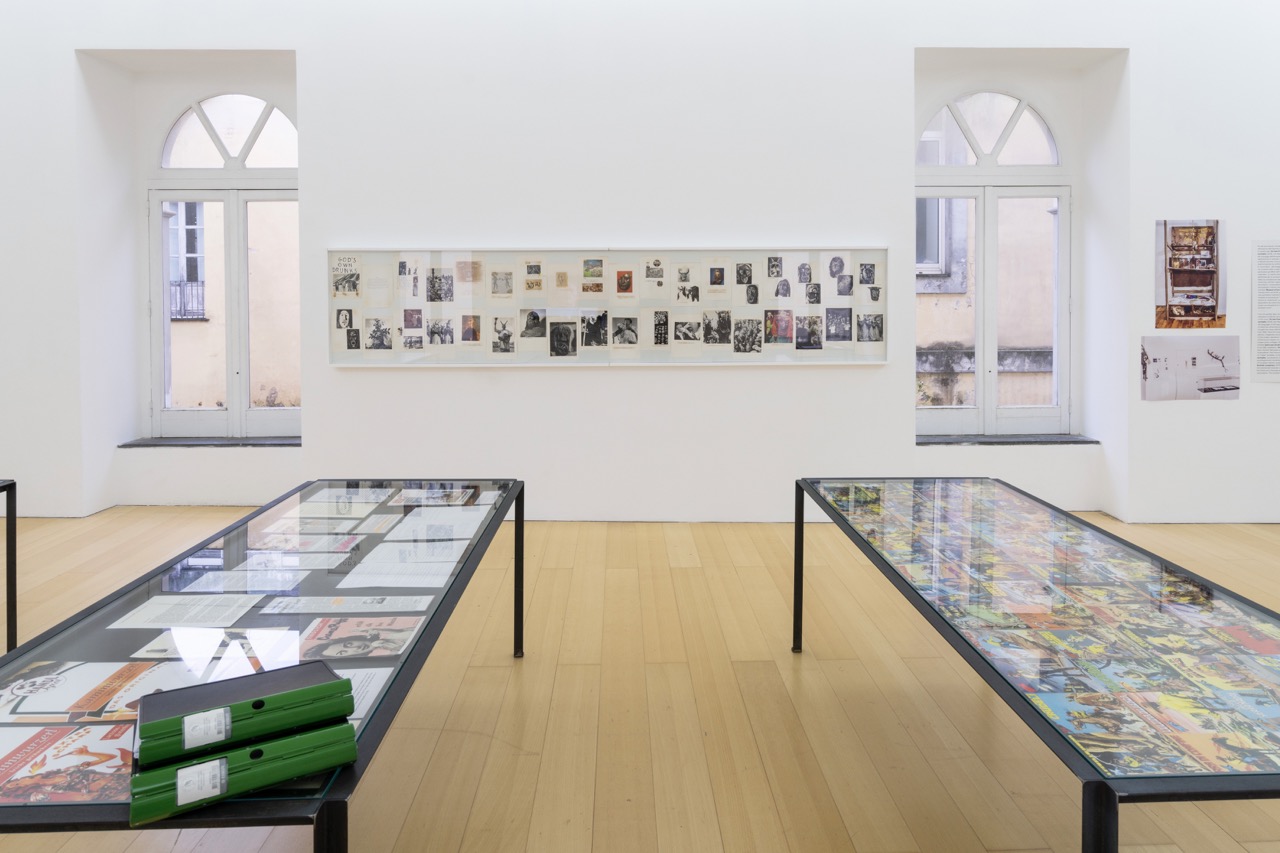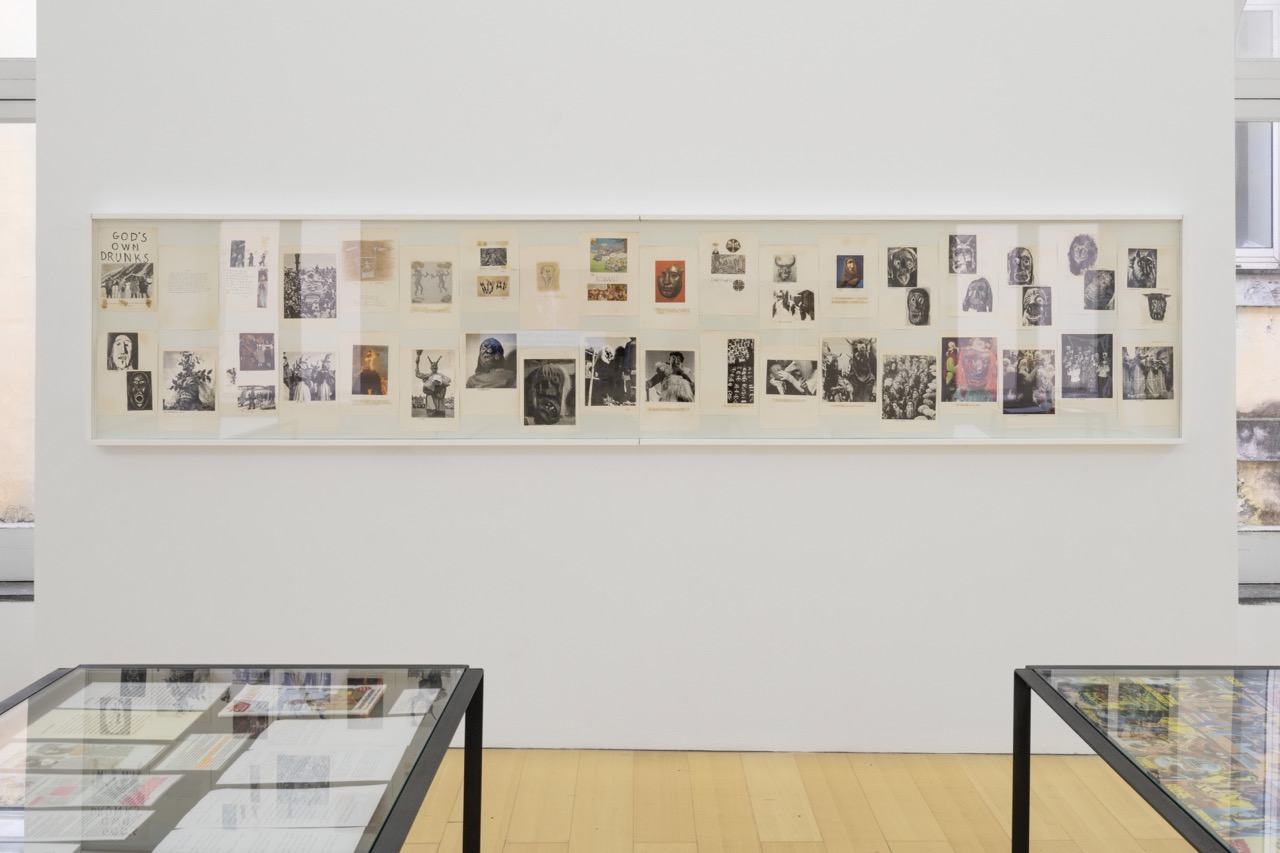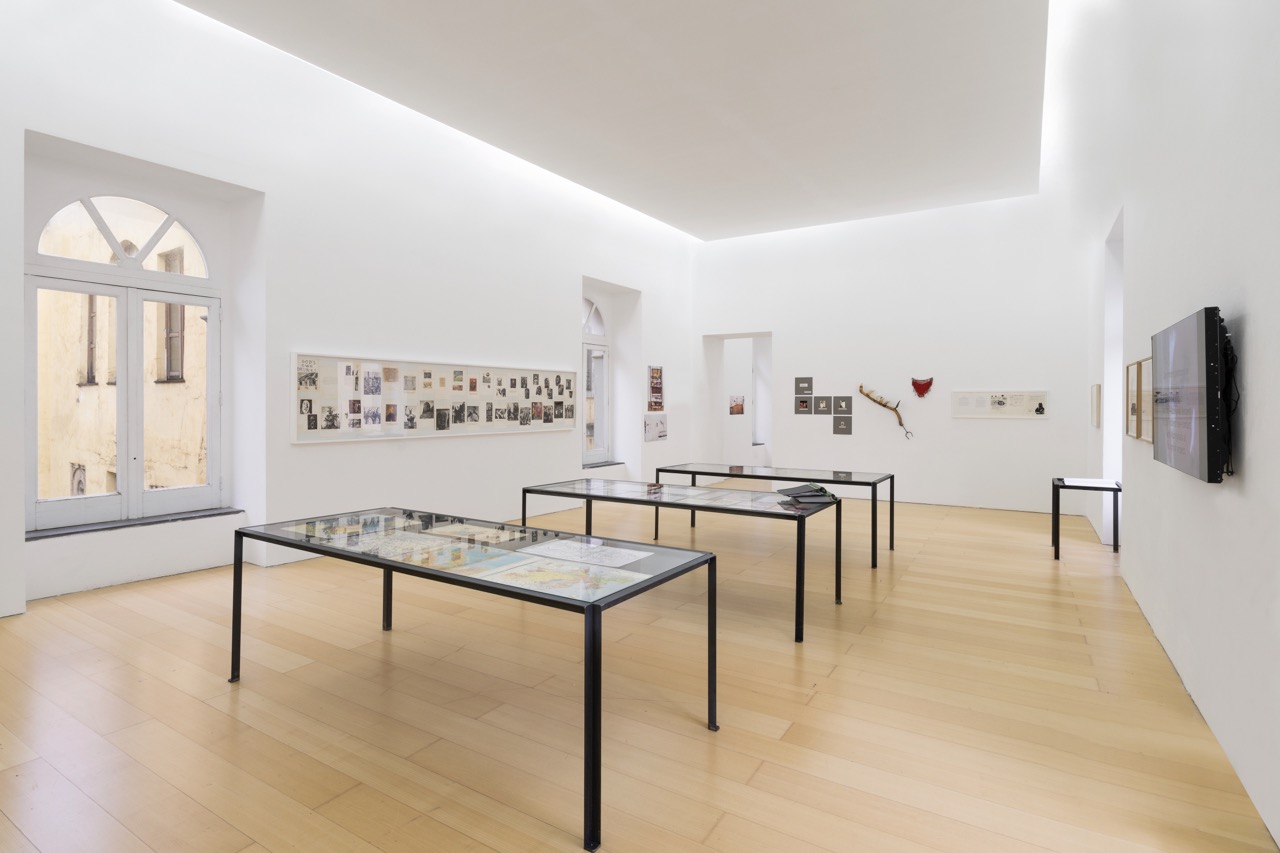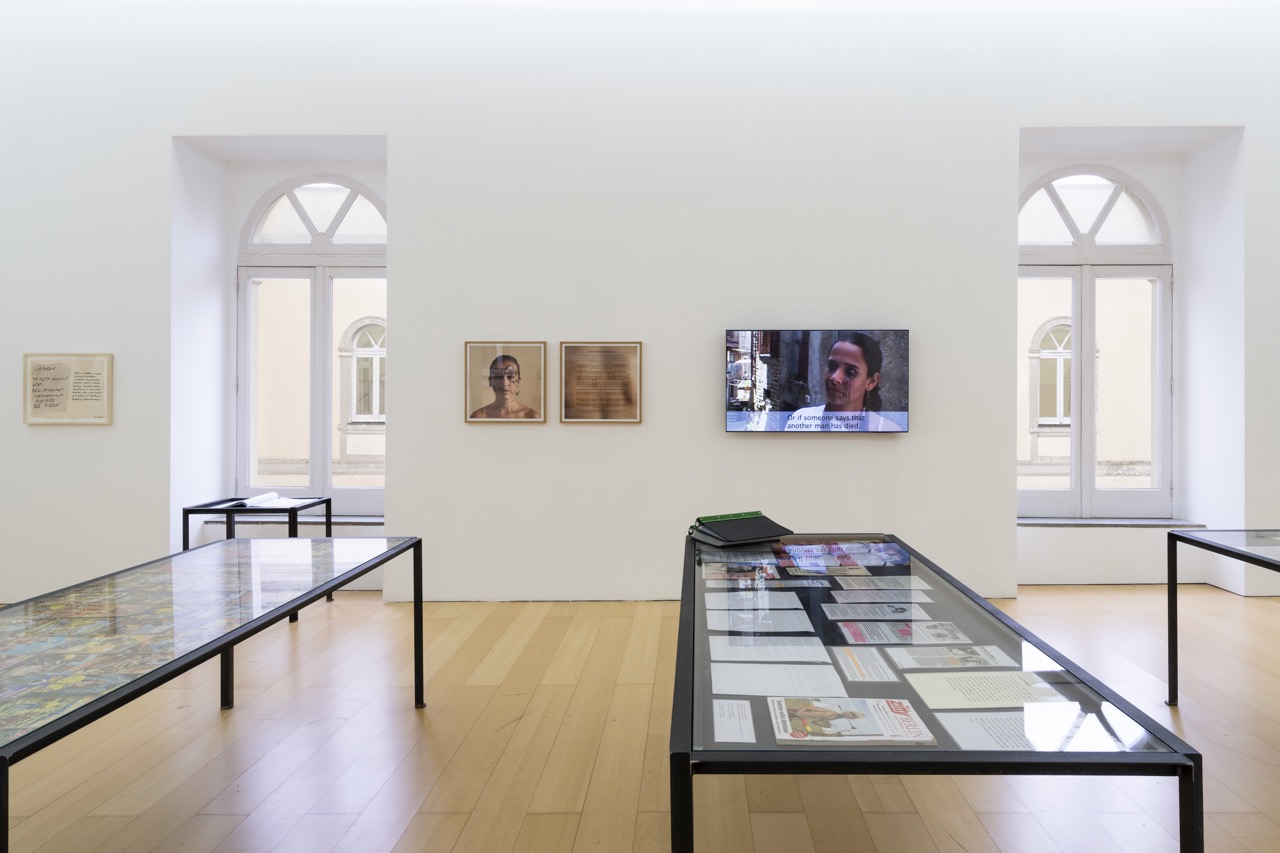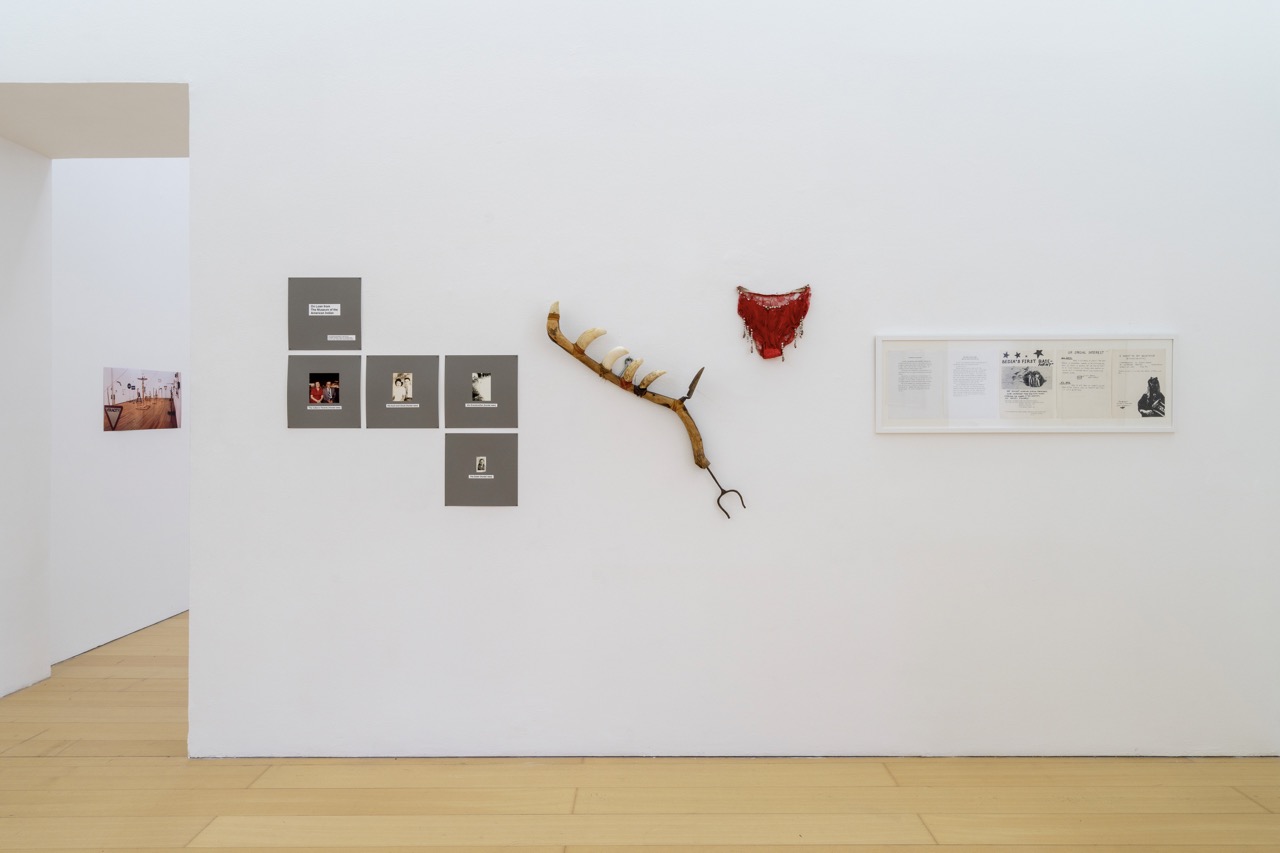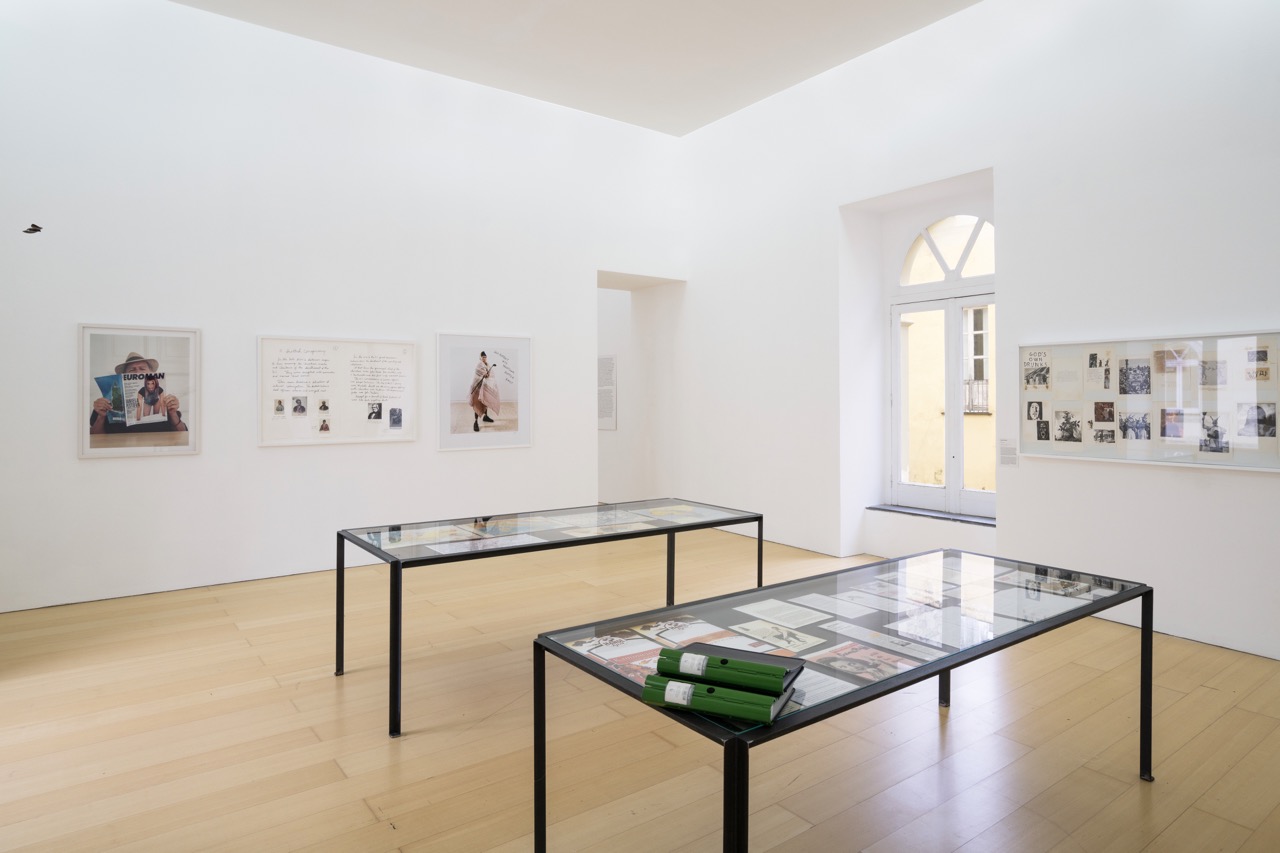From his earliest days, Durham elaborated a precise analysis of the processes through which the reification of identity serves the interests and co-options of capitalism. The installations presented in this room, On loan from the Museum of the American Indian (1985) and Museum of European normality (2008, with Maria Thereza Alves), are key examples of Durham’s critical mobilisation of the languages of ethnography and museology as a strategy to ironically interrupt their enforcement of reductive certainties and normalizing procedures. This critique however had already been crystallised and brought into sharp definition during his period as a student at the École des Beaux-Arts in Geneva between 1969 and 1973. There he compared his previous observations of narratives of national and ‘minority’ identity, indigeneity and authenticity in the United States with a study of ‘Swissness’ in the context of the modern alienation from longstanding cultural heritage, discussing in particular the effects of the tourist industry on the Swiss ‘folk’ art of mask making. The exhibition features previously unseen photo collages, drawings and text from a work the artist presented for his graduation in 1974, entitled God’s own drunks. This research also allowed Durham to clearly formulate how European cultures are not insulated from the culturally destructive and alienating processes that everywhere accompany the development of capitalism. The photographs taken by Durham during his research in Switzerland would later be used as the basis for the work Maquette for a Museum of Switzerland (2012), which addresses the history of Swiss culture through the lens of finance, watch making and traditional masks.
In his multipart installation, On loan from the Museum of the American Indian, originally presented in the group show ‘Dimensions in Dissent’ at Kenkeleba Gallery in 1985, and partially reconstructed here, Durham fabricated a museum display with found objects labelled as ‘sociofacts’ and ‘sciencefacts’ that humorously comment on the reductive anthropological frameworks imposed on ‘Indian’ societies. This work was particularly inspired by the Smithsonian Institution’s proposal for a new ‘National Museum of the American Indian’ for the National Mall in Washington. Durham was in fact struck by the use of the singular — the American Indian — and parodied himself as a specimen of such singularised Indian subjectivity, including personal effects such as photographs of his family members in The Indian’s family (frontal view). Pocahontas’s Underwear, a costume decorated with dyed feathers and beads, underlines a realm of fetishist fantasy and sexualization in accounts of the historical figure Pocahontas, a Powhatan woman who is now the subject of a broad cultural mythologising, most notably by Disney, and who has been falsely attributed the role of helping to establish the first English settlement in North America. Enigmatic elements like Whale Teeth Stick, acted as ‘fake artefacts’, reminiscent of some dubious ritual object. The display also included diagrams labelled ‘Current Trends in Indian Land Ownership’ with maps of the United States that revealed the accelerating expropriation of indigenous lands across time. Durham makes visible how museums reinforce settler colonial narratives that represent land as ‘terra nullius’ and indigenous people as becoming extinct. This line of critique resonates further in the work Not Lothar Baumgarten’s Cherokee (1990) where Durham comments on the practices of authoritative usurpation of territories of knowledge by certain white male artists creating subjective anthropologies of other cultures, including German conceptual artists Lothar Baumgarten, who according to Durham ‘made a reputation using ‘Indians’ as subject matter’, as well as Joseph Beuys.
A more recent museographical display entitled Museum of European normality, conceived by Durham in collaboration with Maria Thereza Alves for the seventh edition of the European nomadic biennale ‘Manifesta’ in Trento (Italy) in 2008, presents a selection of materials in museographic showcases representing sociological and morphological data, migration patterns and everyday life material constitutive of European identity, subjecting the European gaze to its own modalities of ‘scientific’ display. Included in this installation is a series of humorous self-portraits Durham made at different locations in Europe in which references to Europe are visibly associated with an array of products and businesses. An Anti-guest book lists the names of more than five thousand refugees that lost their lives crossing the Mediterranean Sea in attempts to enter ‘Fortress Europe’ over a period from 1993 to 2008. With reference to controversies surrounding the proposed restitution of a tattooed Maori head from the Museum of Natural History in Rouen (France), Alves’ Fair Trade head invites Europeans to donate photographs of their heads as a symbolic proxy that enables a fair exchange between European citizens and Maori descendants denied the restitution of their ancestor’s body parts. In her short film Male display among European populations, a young indigenous anthropologist presents her research on ‘the custom of some European males to touch their testicles in public’ in a setting described as a ‘typical European village’. Displacing the presumed white European gaze of museology to position Europeans as the objects of scientific observation, the installation invites visitors to reflect on what informs their own gaze. The diptych A Scottish conspiracy (2010) further complicates notions of cultural ‘authenticity’ by recounting the intertwined histories of important Cherokee chiefs that descended from Scottish settlers from the 1600s and Cherokee women. For example, John Ross (1790 – 1866), the son of a Cherokee mother and a Scottish father, fought against the U.S. throughout the American Frontier Wars. Yet, he and other Scottish Cherokees contributed to the remodelling of social and governance systems in accordance with U.S. land ownership laws, often thus acquiring large plantations and also African slaves, perpetuating in this way a process of ‘internal colonization’, as Durham points out.
Jimmie Durham: humanity is not a completed project, installation view of the exhibition at the Madre museum, 2023. Photo by Amedeo Benestante
